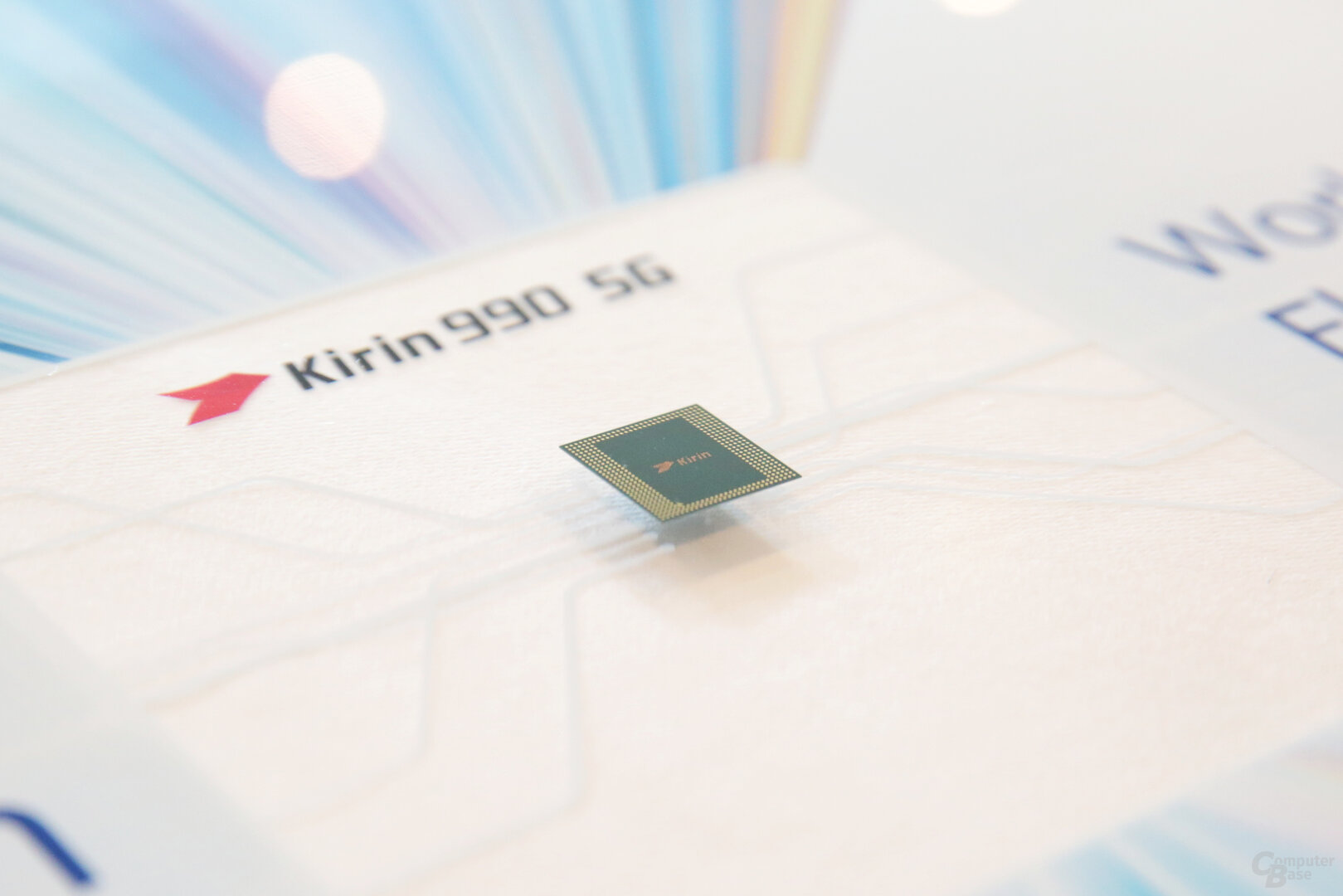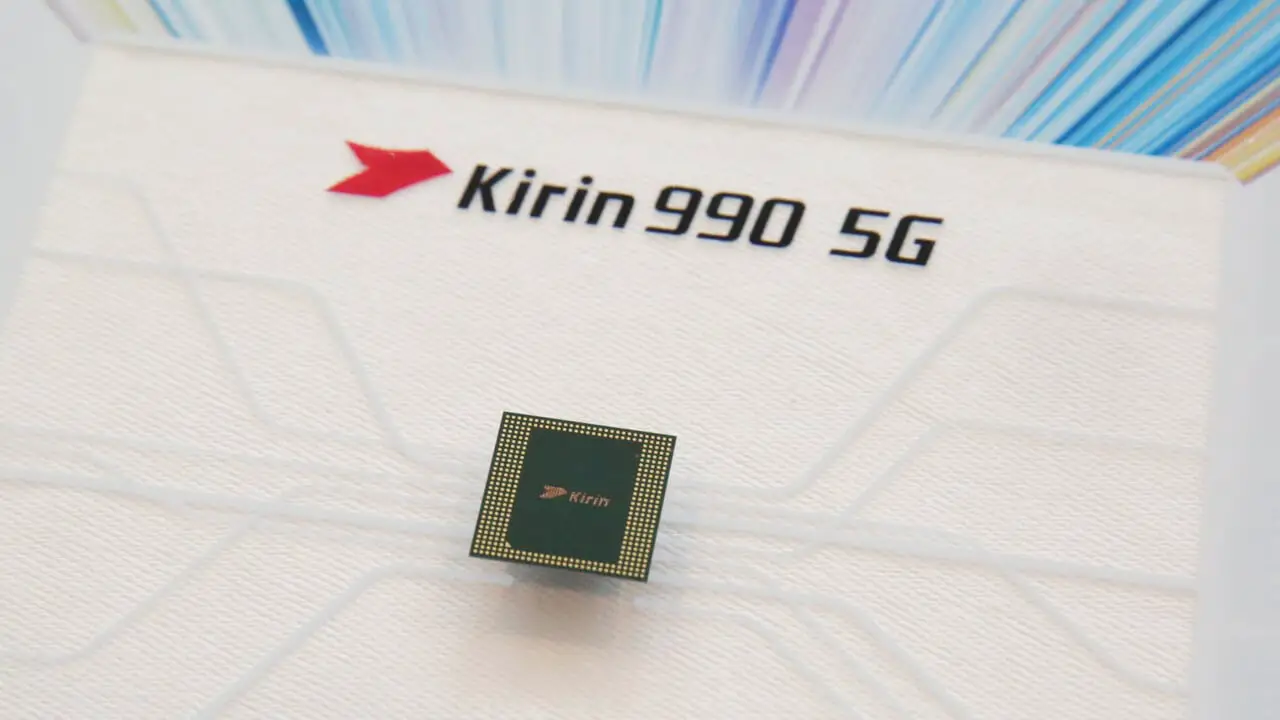Huawei's HiSilicon chip company presented the SoC of the Mate 30 Pro at the IFA. The Kirin 990 comes in two versions: with and without 5G. The 5G modem no longer has to be installed as an additional chip. This saves space and potentially reduces energy consumption. HiSilicon also offers its own Kirin A1 Bluetooth chip.
First the system-on-a-chip, then the smartphone. In Berlin, Huawei and HiSilicon introduced the Kirin 990 as the successor to the Kirin 980. For the first time, two versions of a new chip are being offered: with the support of the new 5G mobile radio standard and without 5G and with somewhat weaker key data regarding CPU and Neural Processing Unit (NPU). The matching smartphone will follow in Munich on September 19: the Huawei Mate 30 Pro.
5G modem provides 10.3 billion transistors
In the version with 5G there is a multi-mode modem in the Kirin 990 that supports all current mobile radio standards from the new 5G to LTE and 3G down to 2G. The smaller model of the Kirin 990 is already at LTE. The integration of the modem directly into the SoC is important in that this step can make the design of the motherboard in the smartphone more compact. For example, Huawei has more space for a larger battery or other components. In addition, the energy requirement of a single chip is lower than when two chips are used, despite the complex 5G modem. With the combination of Kirin 980 and Balong 5000, the LTE modem of the SoC was also idle. This is also the case with the Exynos 9820 and 9825 with Exynos 5100 modem, only Qualcomm provides the Snapdragon 855 with the Snapdragon X50 a pure, albeit older, modem only for 5G.
The number of transistors has nevertheless increased massively due to the integration of the modem. Huawei names 10.3 billion transistors. For comparison: the Kirin 980 had 6.9 billion transistors, the Snapdragon 8cx, which is similar to the Snapdragon 855, 8.5 billion transistors and the Apple A12 Bionic 6.9 billion transistors. Huawei has not yet given any information on the size of the package, but the Kirin 990 with 5G support is said to be smaller than the common area of the Snapdragon 855 and Snapdragon X50 or Exynos 9825 together with the Exynos 5100.
7 nm FinFET + with EUV from TSMC
The fact that Huawei has apparently succeeded in combining the Application Processor (AP) and Multi-Mode Modem even without a size is comparatively compact is due to the manufacturing process chosen. As a partner, the Taiwan Semiconductor Manufacturing Company (TSMC) comes into play again, which runs the Kirin 990 in 7 nm FinFET + including EUV. Samsung uses a similar process of its own for the Exynos 9825 of the Galaxy Note 10. This type of manufacturing is not an exclusive feature of the Kirin 990, but it suits Huawei in view of the complexity of the chip. Apple is said to be the second customer for 7 nm FinFET + after HiSilicon.
HiSilicon does without 5G mmWave
In terms of size, Huawei benefits from the fact that all features relating to WLAN, Bluetooth and global navigation satellite systems are outsourced to an external chip, while Qualcomm and Samsung offer these features via the SoC. In addition, Huawei does not offer the full 5G functionality of the 5G modem Balong 5000 that was introduced in January in the Kirin 990. 5G is only supported in the sub-6 GHz range, but not also via mmWave. This reduces the complexity of the modem, but it also means that markets like the United States are neglected, although that doesn't play a major role in the current trade dispute anyway. Instead, the focus is on the Chinese home market and Europe. But in Europe, mmWave will also find its way into inner cities in the coming years. Customers who buy a new top smartphone with 5G support for a period of use of several years are potentially missing a feature in the Mate 30 Pro.
2.3 Gbit / s in the downlink at 100 MHz spectrum
According to Huawei, the integrated 5G modem is no longer quite as powerful as the standalone Balong 5000. According to the top speeds mentioned, carrier aggregation above 5G no longer exists. In the downlink, over 5G in the sub-6 GHz range up to 2.3 Gbit / s with a frequency block of 100 MHz are possible, for the uplink 1.25 Gbit / s are also mentioned for a 100 MHz spectrum. With the Balong 5000 there were still two carriers with a total of 200 MHz and down and uplink data rates of 4.6 Gbit / s and 2.5 Gbit / s respectively. Using the combination of 5G and LTE, 2.9 Gbit / s is possible at the top in the downlink. In areas with poor reception, LTE should also be able to support the 5G signal in the uplink.

New NPU has up to three cores
For AI calculations in the areas of photo and video, for example, a new NPU is available to relieve CPU and GPU, this time using the Da Vinci architecture used in the server segment of HiSilicon, which is used in the AI accelerators of the Ascend series can be found. Here, ARM cores not mentioned are used, more precisely two large (Big) and one small (Tiny) core, whereby in this point a distinction must be made between the Kirin 990 with 5G and the variant without 5G. In the LTE model, the NPU now only offers one large and one small core. For full expansion, Huawei names 2.53 times the performance of the Kirin 980's dual NPU and 4.76 times the performance of the Kirin 970. Huawei and Qualcomm want to beat Apple and Qualcomm with the ETH AI Benchmark 3.0 ,
On the next page: Octa-core CPU with known ARM cores















